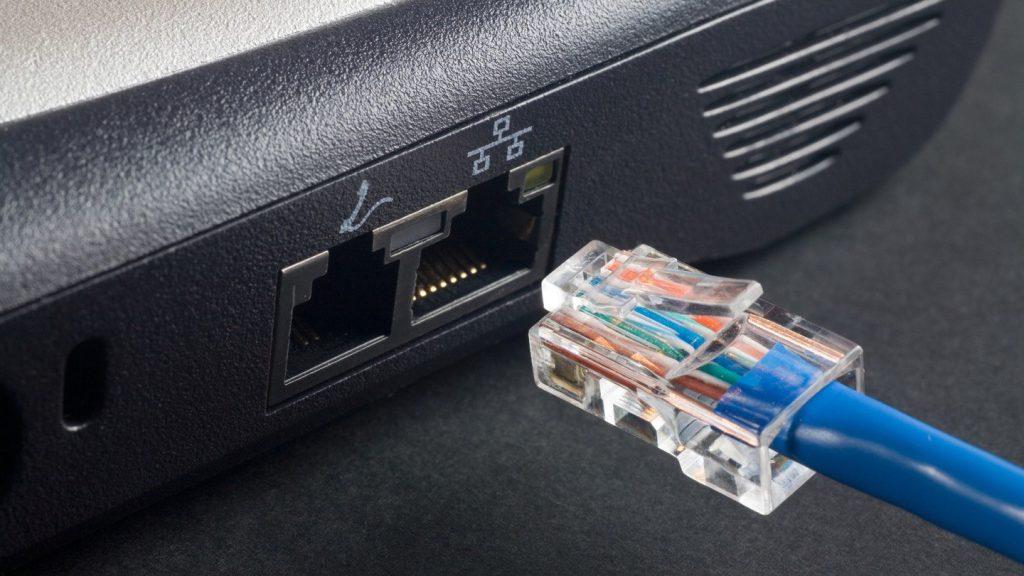Data cabling out of spec can result in dropped packets and irregular connections. For example, those used to stream video or transfer files could mean increased buffer or transfer times for simple data networks. For real-time audio, it can mean audible dropouts or loss of audio.

Shielded Vs. Unshielded
Both cable types can be used for Audio Video Bridging networking. It has its advantages, depending on the kind of AVB installation. Shielded Twisted-Pair cables provide a barrier to help interference, especially Electromagnetic Interference. The STP cable is constructed with additional electrical shielding along the length of the cable as well as constructed plugs that electrically connect and properly ground the cable shielding to the device connected at each end. The shielded cable is ideal for fixed installations where the Ethernet cable must run data cabling near power.
Like a balanced analogue cable, STP cables have to be grounded. Most XLR-style locking Ethernet connections are used on Pro Audio equipment to support both shielded and unshielded cable connections. A shielded Ethernet cable may be needed to prevent Electromagnetic Interference or Radio-Frequency Interference from affecting the cable’s performance. Several different acronyms are commonly used to describe shielded cables where the twisted pairs are not individually shielded. These cable types rely on an overall screen to filter out external noise. While they may be used synonymously, there are significant differences to note:
- SF/UTP – this cable features a braided screen and a foil shield that surrounds unshielded twisted pairs. Cables with an overall braided screen are suitable for applications that need extra protection from Electromagnetic Interference.
- S/UTP – this cable features a braided screen surrounding unshielded twisted pairs.
- F/UTP (FTP) – this cable uses an overall foil shield to protect the unshielded twisted pairs and is essentially very similar to a simple UTP cable, offering little protection.
- S/FTP – this cable features an overall braided screen encasing foil-screened twisted pairs. Each twisted pair is protected by its foil screen to limit the crosstalk amount between them.
- F/FTP – in this design, an overall foil screen protects individually wrapped foil-screen twisted pairs.
- U/FTP – this design removes the overall screen and relies only on the individual foil-wrapped twisted pairs to limit interference.
Cat5e and Cat6
Copper-wire Ethernet networks generally use twisted-pair cables. Twisted pair cabling is when two conductors of a single circuit are twisted together to cancel out electromagnetic interference from an external source. AVB networks require either CAT5e or CAT6 cables, supporting Gigabit speeds at lengths up to 100 meters. CAT6 is designed to help speeds up to 10 Gb/s (10 Gigabit Ethernet), but it is backward compatible with CAT5e. The differences between CAT5e and CAT6 cable are the conductors’ wire gauge and the number of twists per inch in each wire pair. CAT6 cable uses a heavier gauge wire and more twists per inch, providing an overall better performance rating than the CAT5e equivalent.
The type of cable chosen for your application largely depends on several factors:
- Network design
- Installation type
- Budget
- Future applications
Although the CAT5e cable is usually more cost-effective, more comfortable to work with and, fully supports Gigabit speeds, Cat6 is generally a better choice and is well worth the additional investment.
Plug Termination
There is also always the option to create your Ethernet cable. It saves money and allows you to develop cables to fit your needs and specifications. If you choose to make your Ethernet cables, it’s essential to be aware of some possible pitfalls and follow some crucial guidelines.
Most RJ-45 connectors are designed to be used with either solid-core or stranded cable. However, you should always confirm the connector’s compatibility with the type of cable you are using. Deploying a plug designed for one type of cable with the wrong cable type can produce undependable results.
The same applies to CAT5e and CAT6 cable connectors. Most RJ-45 connections are required to be used specifically with one or the other. Also, some connectors are designed for specific wire gauges and cable diameters. So, you should always confirm your connector’s compatibility with the particular cable you are using.
Twisted Pair Tips
When building your twisted-pair Ethernet cable, the twists must be maintained as close as possible to the plug’s contact termination. You will want to make sure the wire pairs running to adjacent pins are parallel inside the pin’s plug body. Trimming the wire pairs, so they are the proper length is crucial, as you want to make sure the back-crimp of the plug is clamping down on the cable jacket, not the wires. It is easy to create a low termination as the window is narrow between a working cable and a failing cable. Ethernet cable’s crosstalk performance and Electromagnetic Interference rejection capabilities rely on maintaining these wires’ relationships within the cable and the plug termination. If you are not familiar with proper termination techniques, Data Cable Installation recommends consulting with a professional.
Need data cabling experts near the London area? Our experts specialise in cable installation and are happy to answer any queries you may have. Call a member of our team on 0207 630 6094 or email us at hello@datacableinstallation.co.uk.